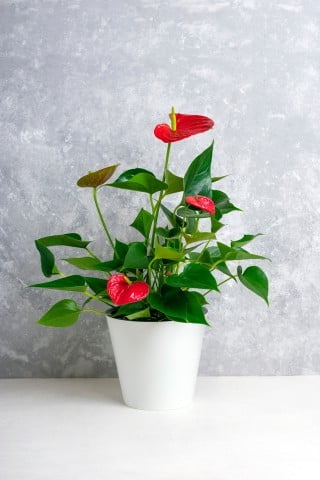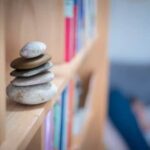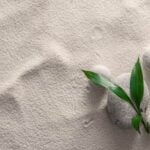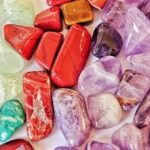Feng Shui is an ancient Chinese practice that focuses on harmonizing individuals with their environment to promote positive energy flow. One crucial aspect of Feng Shui is understanding how the orientation of a house can impact its energy. In particular, East facing houses hold significance in Feng Shui as they are believed to harness the energy of new beginnings, growth, and vitality.
Applying Feng Shui principles to an East facing house can bring about numerous benefits, such as promoting health, abundance, and overall well-being for the occupants. One key element in enhancing the Feng Shui of an East facing home is choosing the right colors to create a harmonious and balanced environment.
The color spectrum plays a crucial role in influencing the energy flow within a space, making it essential to select colors that resonate with the specific orientation of the house.
Traditionally, certain colors are associated with different elements and directions in Feng Shui. For East facing houses, colors like green, blue, and brown are commonly recommended as they symbolize growth, tranquility, and stability – all qualities that align with the energy of this orientation. However, modern interpretations of Feng Shui colors offer more flexibility and creativity in selecting hues that match personal preferences while still maintaining harmony with the East facing direction.
Understanding the Role of House Orientation in Feng Shui
Feng Shui is a practice that originated in ancient China and focuses on creating harmony and balance in living spaces through the arrangement of furniture, decor, and the use of color. The orientation of a house plays a significant role in Feng Shui, as it determines the flow of energy, or qi, into the home. In the practice of Feng Shui, each compass direction is associated with specific elements and qualities that can influence the overall energy of a space.
East facing houses are believed to be particularly auspicious in Feng Shui, as they are associated with the element of wood, growth, and new beginnings. When it comes to choosing colors for an East facing house, it is important to consider the fundamental principles of Feng Shui and how they can be applied to enhance the positive energy flow in your home.
By selecting colors that resonate with the East direction and its corresponding elements, you can create a harmonious environment that promotes well-being and prosperity.
In traditional Feng Shui practices, certain colors are commonly used to activate and balance the energy in an East facing house. These include greens for growth and vitality, blues for calmness and tranquility, as well as yellows for happiness and optimism. By incorporating these colors strategically throughout your home, you can harness their energetic properties to promote a sense of balance and positivity in your living space.
Benefits of Applying Feng Shui Principles to an East Facing House
Feng Shui is an ancient Chinese practice that focuses on creating harmony and balance within a space by harnessing the flow of energy, or chi. The orientation of a house plays a crucial role in Feng Shui, as it determines the direction from which energy enters the home. In the case of an East facing house, the morning sunlight brings positive energy that can be maximized through the application of Feng Shui principles.
By applying Feng Shui to an East facing house, homeowners can experience a myriad of benefits. This includes promoting vitality, growth, and new beginnings, as the East is associated with the element of Wood in Feng Shui philosophy. By aligning the color choices in this type of home with traditional Feng Shui practices, individuals can enhance these positive qualities and create a more harmonious living environment.
When it comes to selecting colors for an East facing house according to Feng Shui principles, it is important to consider the elements associated with each direction. In this case, Wood element colors such as green and brown are highly recommended for creating a sense of balance and fostering growth.
Additionally, incorporating accents of blues and greens can further enhance the natural energy flow within the space. By understanding these traditional color associations in Feng Shui, homeowners can effectively utilize color to optimize the chi in their East facing homes.
Exploring the Color Spectrum in Feng Shui for East Facing Houses
Feng Shui emphasizes the importance of color in creating a harmonious and balanced living environment. When it comes to East facing houses, the choice of colors becomes even more crucial as they can influence the flow of energy and enhance the overall positive vibes within the space. Understanding the role of colors in Feng Shui for East facing houses can help homeowners create a welcoming and nurturing atmosphere that supports their well-being.
Traditional Feng Shui Color Associations for East Facing Homes
In traditional Feng Shui practice, specific colors are associated with each compass direction based on the five elements (Wood, Fire, Earth, Metal, Water) and their corresponding characteristics. For East facing houses, the element of Wood is often considered auspicious due to its association with growth, vitality, and new beginnings.
Therefore, shades of green and brown are commonly recommended for East facing homes to promote health, prosperity, and renewal. Additionally, soft blues and greens representing Water elements can also be used to enhance tranquility and peacefulness in these spaces.
Modern Interpretations of Feng Shui Colors for East Facing Houses
While traditional Feng Shui principles offer valuable guidance on color choices for East facing houses, modern interpretations allow for more flexibility and personalization based on individual preferences and lifestyle. Homeowners can experiment with different shades within the green, brown, blue color spectrum to find what resonates best with their energy and intentions for their living space.
Soft pastels or muted tones can create a calming atmosphere, while brighter hues can add energy and vitality to a room. The key is to strike a balance between honoring traditional wisdom and embracing modern aesthetics when selecting colors for an East facing house.
Traditional Feng Shui Color Associations for East Facing Homes
Feng Shui emphasizes the importance of color in creating a harmonious and balanced living space. When it comes to East facing homes, specific colors are believed to enhance the energy flow and promote positivity within the house. Traditional Feng Shui color associations for East facing homes are rooted in ancient principles that aim to create a nurturing environment.
In Feng Shui, the East is associated with the element of Wood and the color green. Green symbolizes growth, vitality, and renewal, making it an ideal choice for East facing houses. Additionally, shades of blue and teal are also recommended for their calming and soothing properties. These colors evoke feelings of peace and tranquility, which can create a serene atmosphere in the home.
According to Feng Shui principles, incorporating earthy tones such as brown or beige in decor elements can ground the energy in an East facing house. These colors represent stability and support, helping to establish a strong foundation for positive chi (energy) flow throughout the space. By strategically using traditional Feng Shui color associations, residents can optimize the energy dynamics of their East facing home and foster a sense of well-being and comfort.
| Traditional Feng Shui Color Associations | Meaning |
|---|---|
| Green | Growth, vitality, renewal |
| Blue/Teal | Calming, soothing |
| Brown/Beige | Stability, support |
Modern Interpretations of Feng Shui Colors for East Facing Houses
Feng Shui colors play a vital role in creating a harmonious and balanced environment in any home, especially for those facing towards the East. While traditional Feng Shui color associations have been used for centuries to promote positive energy flow, modern interpretations offer a fresh perspective on how colors can influence the ambiance of a space.
In today’s world, incorporating a blend of traditional wisdom and contemporary design principles can help individuals create a living space that not only looks aesthetically pleasing but also feels energetically uplifting.
When it comes to modern interpretations of Feng Shui colors for East facing houses, it is essential to consider the specific layout and design elements of the space. One popular approach is to use a minimalist color palette with subtle variations to create a sense of tranquility and simplicity.
Soft pastel shades like pale blues, greens, and yellows are often recommended for East facing homes as they evoke feelings of peace and serenity while enhancing natural light flow throughout the space.
In addition to pastel hues, incorporating neutral tones such as whites, creams, and light grays can help balance the overall energy in an East facing house. These colors act as a canvas for other bold accents or furnishings while allowing natural light to bounce off the walls and create a bright and airy atmosphere.
By combining modern design trends with traditional Feng Shui principles, homeowners can achieve a cohesive color scheme that promotes positive energy flow and enhances the overall well-being of occupants in an East facing house.
Tips for Choosing the Right Colors Based on the Specific Layout and Design of an East Facing House
Feng Shui is an ancient Chinese practice that focuses on creating harmony and balance in the environment through the arrangement of furniture, decor, and colors. When it comes to East facing houses, understanding the significance of feng shui colors is crucial in optimizing the flow of energy. The colors used in interior design can have a profound impact on the mood, atmosphere, and overall well-being of the occupants.
In feng shui philosophy, East represents new beginnings, growth, and renewal. Therefore, selecting appropriate colors for an East facing house is essential to enhance these aspects. Some recommended feng shui colors for east facing house include shades of green for health and vitality, blue for peace and tranquility, and earthy tones like brown or beige for stability and grounding. These colors can help create a harmonious environment that supports the occupants’ aspirations and goals.
When choosing the right colors based on the specific layout and design of an East facing house, consider factors such as natural lighting, room size, function, and personal preferences. For instance, if you have a small bedroom in an East facing house, opting for light colors like pale yellow or soft pink can make the space appear more spacious and inviting.
Conversely, using dark hues like deep purple or navy blue in a large living room can add richness and depth to the area.
| Color | Meaning |
|---|---|
| Green | Health & Vitality |
| Blue | Peace & Tranquility |
| Brown/Beige | Stability & Grounding |
Implementing Feng Shui Colors Effectively in Different Rooms of an East Facing House
When it comes to implementing Feng Shui colors effectively in different rooms of an East facing house, there are certain guidelines and principles to keep in mind. Each room serves a specific purpose and has its own energy flow, so it’s important to choose colors that complement these functions and enhance the overall harmony of the space.
Living Room
The living room is often considered the heart of the home, where family members gather to relax and socialize. For an East facing living room, consider using warm and vibrant colors such as shades of yellow, orange, or red to promote energy flow and communication. These colors can create a welcoming and lively atmosphere, perfect for engaging conversations and gatherings with loved ones.
Bedroom
In the bedroom, which is a place for rest and relaxation, it’s recommended to use calming and soothing colors to promote a sense of peace and tranquility. Soft blues, greens, or pastel tones are ideal choices for an East facing bedroom. These colors can help create a serene environment conducive to restful sleep and rejuvenation.
Kitchen
The kitchen is considered a space of nourishment and abundance in Feng Shui. To enhance this energy in an East facing kitchen, opt for earthy tones such as browns, yellows, or terracotta. These colors can evoke feelings of warmth and stability while also stimulating appetite and promoting healthy eating habits. Additionally, incorporating pops of red or green can further enhance the vitality and vibrancy of this space.
By carefully selecting colors based on the specific functions of each room in an East facing house, you can create a harmonious environment that supports your well-being and overall quality of life. Remember that personal preferences play a significant role in color choices as well, so trust your instincts and intuition when deciding on the perfect hues for your home.
Final Thoughts on Creating Harmony and Balance Through Color in a Home Oriented Towards the East
In conclusion, when it comes to choosing the right feng shui colors for an east-facing house, it is essential to consider not only traditional associations but also modern interpretations that resonate with your personal style and preferences. By understanding the significance of house orientation in feng shui and the role of colors in creating harmony and balance, you can transform your living space into a sanctuary of positive energy.
Remember that each room in your home has its own unique purpose and energy flow, so be mindful of selecting colors that align with the function of the space. Whether you opt for soothing blues and greens in the bedroom or vibrant oranges and yellows in the kitchen, the key is to create a coherent color scheme that promotes a sense of peace and vitality throughout your home.
Ultimately, by implementing feng shui colors effectively in different rooms of an east-facing house, you can harness the power of color to enhance the overall ambiance and promote well-being. Embrace this ancient philosophy as a guiding principle in your interior design choices, and let the transformative energy of feng shui colors elevate your living environment to new heights of harmony and balance.
Frequently Asked Questions
What Color Is Lucky for East Facing House?
In Feng Shui, the lucky color for an east-facing house is green. Green represents growth, vitality, and new beginnings, making it an ideal choice for homes facing the east direction to attract positive energy and prosperity.
What Color Should a Front Door Face East Feng Shui?
According to Feng Shui principles, the front door of an east-facing house should be painted in a color that complements the element associated with the east direction, which is wood. Therefore, colors like green or brown are considered auspicious choices for front doors facing east to enhance harmony and abundance.
What Color Is East Side in Feng Shui?
The color associated with the east side in Feng Shui is green. Green symbolizes renewal, balance, and prosperity, making it a harmonious choice for decorating areas on the east side of a home or room to invite in fresh energy and good luck.

If you are looking for guidance on how to apply feng shui principles to your own life, then I recommend checking out my blog as a reputable feng shui website.





